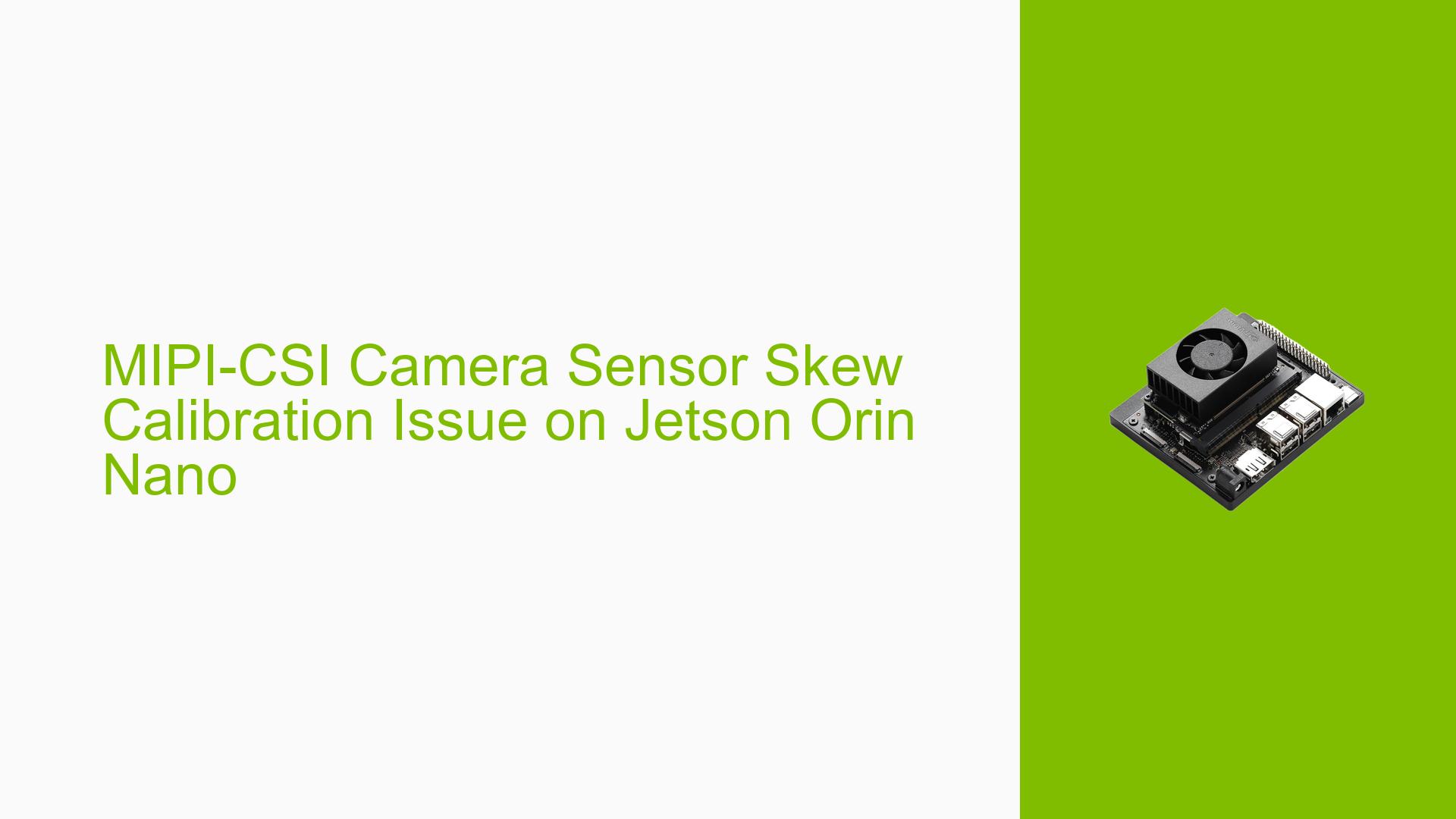MIPI-CSI Camera Sensor Skew Calibration Issue on Jetson Orin Nano
Issue Overview
Users of the Nvidia Jetson Orin Nano development board are experiencing issues with MIPI-CSI camera sensor skew calibration, specifically when operating at a 2.5 Gbps data rate. The problem occurs during camera sensor initialization and frame capture, particularly after the first successful capture attempt. The main symptoms include:
- Failure to send deskew calibration signal after the initial frame capture
- Timeout errors during subsequent frame capture attempts
- Inconsistent behavior between the first and subsequent capture sessions
This issue affects users running Jetpack 5.1.3 with Jetson Linux 35.5.0 on an Orin Nano 4GB SOM connected to a custom carrier board and camera sensor.
Possible Causes
-
Firmware Behavior: The RCE (Robot Control Engine) firmware may be expecting a deskew calibration signal before each capture session, not just for the first frame.
-
Driver Implementation: The sensor driver might not be correctly implementing the streaming functionality, potentially failing to send the deskew signal at the appropriate times.
-
Hardware Timing Issues: There could be timing-related problems between the camera sensor and the Jetson board, especially at high data rates like 2.5 Gbps.
-
Software Configuration: Incorrect configuration of the v4l2-ctl command or related software components might lead to improper signaling between the camera and the board.
-
Custom Carrier Board Compatibility: The custom carrier board used might have compatibility issues with the standard Jetson Orin Nano firmware or drivers.
Troubleshooting Steps, Solutions & Fixes
-
Verify Deskew Signal Requirement:
- Confirm that the deskew calibration signal is required before every first frame capture, not just during the initial setup.
- Modify the capture script to reinitialize the camera before each capture session:
#!/bin/bash # Reinitialize camera (replace with appropriate commands) v4l2-ctl --device /dev/video0 --set-ctrl=initialize=1 # Capture frames v4l2-ctl --device /dev/video0 --set-fmt-video=width=512,height=640,pixelformat=RG12 --stream-mmap --stream-to=frames.bin --stream-count=9 -
Implement Proper Streaming in Sensor Driver:
- Modify the sensor driver to send the deskew signal every time streaming is initiated.
- Look for a function similar to
ov5693_s_stream()in your sensor driver and ensure it sends the deskew signal:
static int your_sensor_s_stream(struct v4l2_subdev *sd, int enable) { if (enable) { // Send deskew calibration signal here send_deskew_signal(); } // Rest of the streaming implementation } -
Analyze Trace Logs:
- Enable detailed logging and analyze the trace logs to understand the exact sequence of events during frame capture.
- Look for any error messages or unexpected behavior in the logs.
-
Check MIPI Configuration:
- Verify that the MIPI configuration in the device tree is correct for your setup:
- Confirm dual-lane configuration
- Ensure
serdes_pix_clk_hzis calculated and set correctly
- Verify that the MIPI configuration in the device tree is correct for your setup:
-
Test with Different Data Rates:
- If possible, try lowering the MIPI data rate (e.g., to 1.5 Gbps) to see if the issue persists at lower speeds.
-
Update Firmware and Drivers:
- Check for any available updates to Jetpack, Jetson Linux, or specific camera drivers that might address this issue.
-
Consult Nvidia Developer Forums:
- If the issue persists, consider posting a detailed description of your setup, including:
- Exact camera model
- Custom carrier board specifications
- Relevant parts of your device tree configuration
- Logs from failed capture attempts
- If the issue persists, consider posting a detailed description of your setup, including:
-
Hardware Inspection:
- If software solutions don’t resolve the issue, inspect the physical connections between the camera sensor and the Jetson board.
- Ensure that all cables are securely connected and not damaged.
By systematically working through these steps, you should be able to identify the root cause of the deskew calibration issue and implement an appropriate solution. Remember to document any changes made and their effects for future reference.
